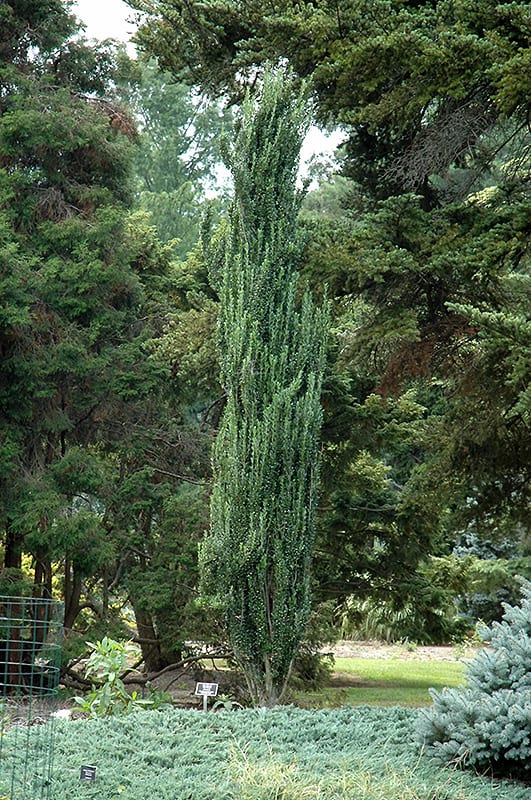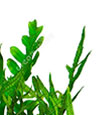Sky Pencil Japanese Holly
A most unique and aptly-named evergreen shrub with an extremely upright and narrow habit of growth, superb choice for small-scale articulation in the garden creation, adds a level of dynamic interest; small leaves further add aesthetic value.
Please contact your local store for product availability.
Find a garden center near you.
Species: crenata
Other Species Names: Boxleaf Holly
Plant Height: 96 in.
Spread: 24 in.
Evergreen: Yes
Plant Form: columnar
Summer Foliage Color: dark green
Minimum Sunlight: partial shade
Maximum Sunlight: full sun
Sky Pencil Japanese Holly has dark green foliage. The small glossy oval leaves remain dark green throughout the winter. The flowers are not ornamentally significant. It produces black berries from mid fall to late winter.
Sky Pencil Japanese Holly is a dense multi-stemmed evergreen shrub with a narrowly upright and columnar growth habit. Its relatively fine texture sets it apart from other landscape plants with less refined foliage. This shrub will require occasional maintenance and upkeep, and is best pruned in late winter once the threat of extreme cold has passed. It is a good choice for attracting birds to your yard. Gardeners should be aware of the following characteristic(s) that may warrant special consideration; Insects Disease Sky Pencil Japanese Holly is recommended for the following landscape applications; Vertical Accent Hedges/Screening General Garden Use
Sky Pencil Japanese Holly will grow to be about 8 feet tall at maturity, with a spread of 24 inches. It tends to fill out right to the ground and therefore doesn't necessarily require facer plants in front, and is suitable for planting under power lines. It grows at a slow rate, and under ideal conditions can be expected to live for 40 years or more. This is a female variety of the species which requires a male selection of the same species growing nearby in order to set fruit. This shrub does best in full sun to partial shade. It prefers to grow in average to moist conditions, and shouldn't be allowed to dry out. It is very fussy about its soil conditions and must have rich, acidic soils to ensure success, and is subject to chlorosis (yellowing) of the leaves in alkaline soils. It is highly tolerant of urban pollution and will even thrive in inner city environments. Consider applying a thick mulch around the root zone in winter to protect it in exposed locations or colder microclimates. This is a selected variety of a species not originally from North America.



